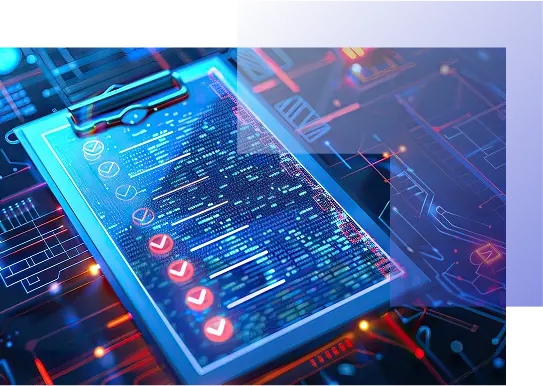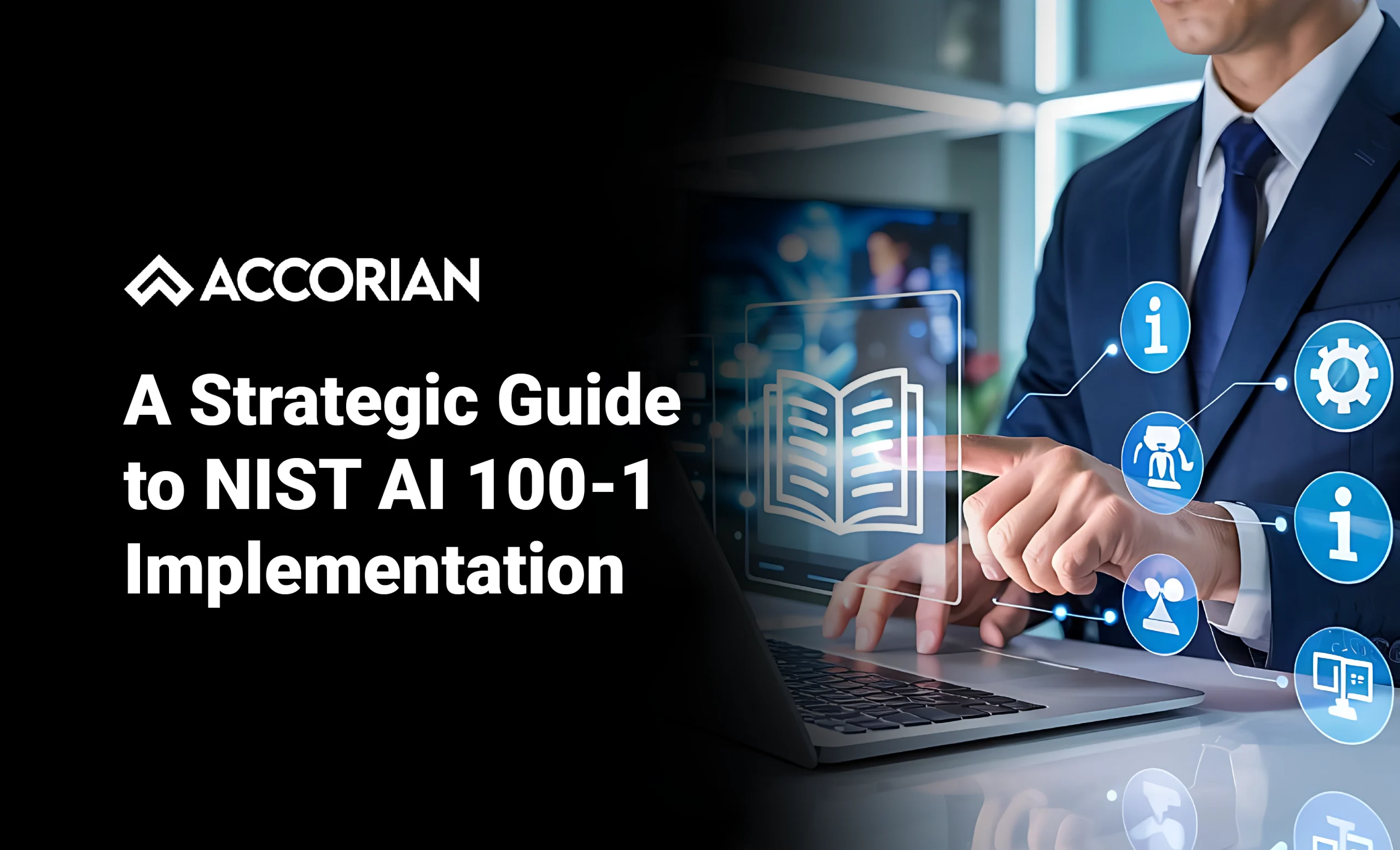NIST AI RMF
The advancement of AI has made the monitoring and management of organizational risks a critical component of modern information systems. It plays a vital role in mitigating bias, ensuring data confidentiality, promoting ethical innovation, and upholding accountability throughout the AI lifecycle.
Why Do You Need
NIST AI RMF?
Why Do You Need NIST AI RMF?
Automated frameworks regulate legal and ethical standards through AI ethics evaluation automation. The absence of controls in AI systems allows technology to operate without restraint, which results in dangerous faults in self-driving vehicles, medical errors, and discriminatory biases that lead to unfair automated decision-making. The resolution of essential AI problems creates a base for dependable and precise AI systems. The correct implementation of AI systems leads to better control, which builds trust and credibility.

Risk Management Program

Scope
The applicability of an AI risk assessment spans the entire life cycle of an AI system. It includes design, development, deployment, and operation. Regular assessments address changing security needs and major shifts comprehensively, which is why results are structural and thorough.
Identification and response planning
The procedure consists of recognizing and evaluating risks regarding bias and discrimination in automated processes, algorithms, and software applications. The diagnosis associates potential risks, for example, viruses or other threats to information systems, and determines the probability of nonfunctional and negative outcomes by choosing a strategy to mitigate, transfer, accept, or avoid the risks. These include security, personnel training, crisis response plans, supervision, shielding business continuity, legal obligations, and bolstered security.
Treatment
Risk treatment addresses recognized risks and vulnerabilities through acceptance, mitigation, or avoidance. Acceptance refers to retaining a known risk within the organization's tolerance; mitigation minimizes risks through security measures and training; and avoidance eliminates actions that provide unacceptable risks.
Access Our NIST AI RMF Brochure
Ideal AI Security Framework Brochure
Core Functions of NIST AI RMF
NIST AI RMF is organized around four core functions:
Govern
It requires the development of policies and standard operating procedure manuals, together with active monitoring to support ongoing risk management.
Map
It demands systems-level AI thinking to comprehensively assess potential risks, vulnerabilities, and impact areas associated with the AI’s deployment and use.
Measure
It necessitates a comprehensive assessment of all identified risks, including the evaluation of potential threats, their likelihood, and the associated business and ethical implications.
Manage
The deployment of AI systems calls for active surveillance, which involves the implementation of the specified risk mitigation and predetermined decision making.
Healthcare
The use of AI involves training models on large datasets to enable the transformation of symptom data into accurate disorder diagnoses. Data privacy can be assured through AI RMF risk management.
Financial Sector
AI facilitates the development of diverse decision-making and predictive models in the financial domain. Trust and regulatory compliance can be strengthened by aligning with the NIST AI Risk Management Framework (RMF).
Manufacturing
In manufacturing industries, AI is integrated into robotics and automation systems to perform complex tasks. NIST AI RMF helps mitigate risks related to safety and quality.
Solution to AI Risks
Organizations and businesses need to incorporate AI technologies into their workflows and processes, which are offered by NIST AI RMF. Through the AI RMF System, organizations gain comprehensive guidance to manage the risks AI brings to businesses. Furthermore, frameworks offer all employees systematic and flowing procedures for evaluating and reducing AI risks through all lifecycle levels. AI RMF is meant to support both low-risk and high-risk AI systems across various applications.
Impact of AI Risks
Unmanaged AI risks impact organizations in terms of reputational damage, non-compliance with laws and regulations, loss of proprietary data, disruptions in supply chains, financial risks, security threats due to misinformation, privacy breaches, bias, intellectual property risks, resource mismanagement, and ethical concerns.
Why Choose Accorian?
Accorian provides a variety of security risk assessments to customers that fulfil the criteria of numerous standards such as HITRUST, PCI-DSS, SOC 2, GDPR, HIPAA, ISO 27001, and others. We provide the optimal systematic risk assessment method that offers clients a collection of related asset types, threats, vulnerabilities, and risks.
By partnering with Accorian, you can optimize resources to meet complex regulatory requirements without the burden of a steep learning curve. Our seasoned consultants will support you every step of the way and help you turn technical business criteria into executable strategies while ensuring nothing vitally important will be missed. As a result of the risk assessment, the organization can independently tackle the AI risks without any legal or compliance gaps, resource drain, or delays.
Frequently Asked Questions (FAQs)
Q. Why should I (organizations) care about the NIST AI RMF?
A. The NIST AI RMF helps organizations manage AI-related risks such as bias, security threats, and ethical issues. By applying its guidelines, businesses can build AI systems that are fair, reliable, and trusted by stakeholders.
Q. How does the NIST AI RMF actually work in practice?
A. The framework follows a structured methodology: scoping AI systems across their lifecycle, identifying and planning for risks, and applying treatments like mitigation or avoidance. It also organizes activities into four functions: Govern, Map, Measure, and Manage.
Q. Which industries can benefit the most from NIST AI RMF?
A. NIST AI RMF applies across multiple industries. In healthcare, it ensures data privacy and safer AI diagnostics. In finance, it builds regulatory trust in AI decision-making. In manufacturing, it reduces safety and quality risks in robotics and automation.



